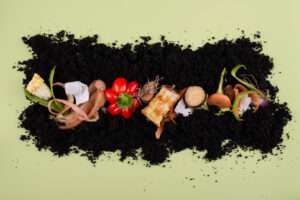So, you want to grow your own veggies but don’t have the cash (or space) for a Pinterest-perfect raised bed garden?
Good news: all you really need is an old sink or bath, a bit of creativity, and some generous neighbours to create a DIY raised vegetable garden.
Yes, you read that right…a sink or bath. The kind people leave on the side of the road when they’re redoing their kitchen. That plus seedlings and a splash of DIY spirit, and you’ve got yourself a sustainable veggie garden for less than $30. Let’s dig in.
Step 1: Find an Old Sink or Bath
Where to find? Start by keeping your eyes peeled during council clean-up or curb-side collection days. Ask on local Facebook groups or post on your local Buy Nothing page. You’d be surprised how many people toss out perfectly usable sinks or bathtubs.
Sink or bath? Either will work, the only difference is size. A sink is great for a small herb or salad garden. A bath gives you room for root veggies or bigger plants like tomatoes.
What should it be made of? Both stainless steel or ceramic will work. If you chose enamel or ceramic, just make sure they haven’t been painted with anything questionable.
Is it safe to grow food in an old sink or bath? Most enamel or ceramic sinks and baths are safe for growing food, but avoid anything with flaking paint or rusted metal. If unsure, line the inside with a thick layer of newspaper before adding soil.
The key is drainage! If your sink or bath doesn’t already have holes in the bottom (many do), you’ll need to drill a few. No fancy tools? A hammer and nail will do the trick if you’re patient.
Cleaning: I’m a huge germaphobe so I spent a good while giving our sink a good scrub (the photo below is after cleaning). I used an old rag and vinegar for the sticky bits, and blasted the rest of the grime off with our garden hose.
We found our sink at the local dump for $20. The man working there was stoked for us and said these sinks sell brand new for close to $1500. What a bargain for us!
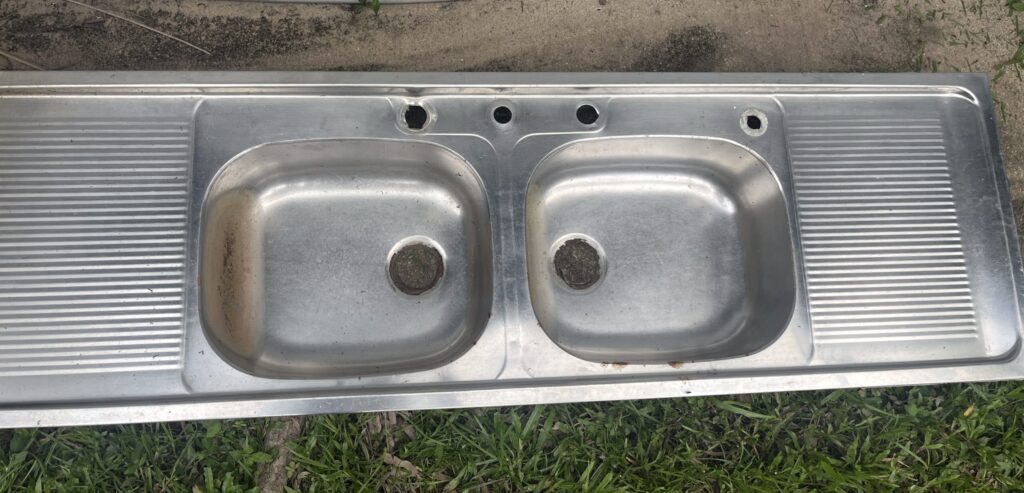
Step 2: Set It Up for Planting
Once you’ve secured your sink or bath, it’s time to prep it for planting.
How much sun does it need? Place your sink or bath in a spot that gets at least 4–6 hours of sun a day, more if you’re growing fruiting plants like tomatoes or capsicum.
Prop it up. Sinks, especially, need to be raised off the ground so water can drain properly. Try your best to make sure it’s level and stable.
We used old bricks and plant pots we has lying around to lift our sink. It cost us zero and works a treat.
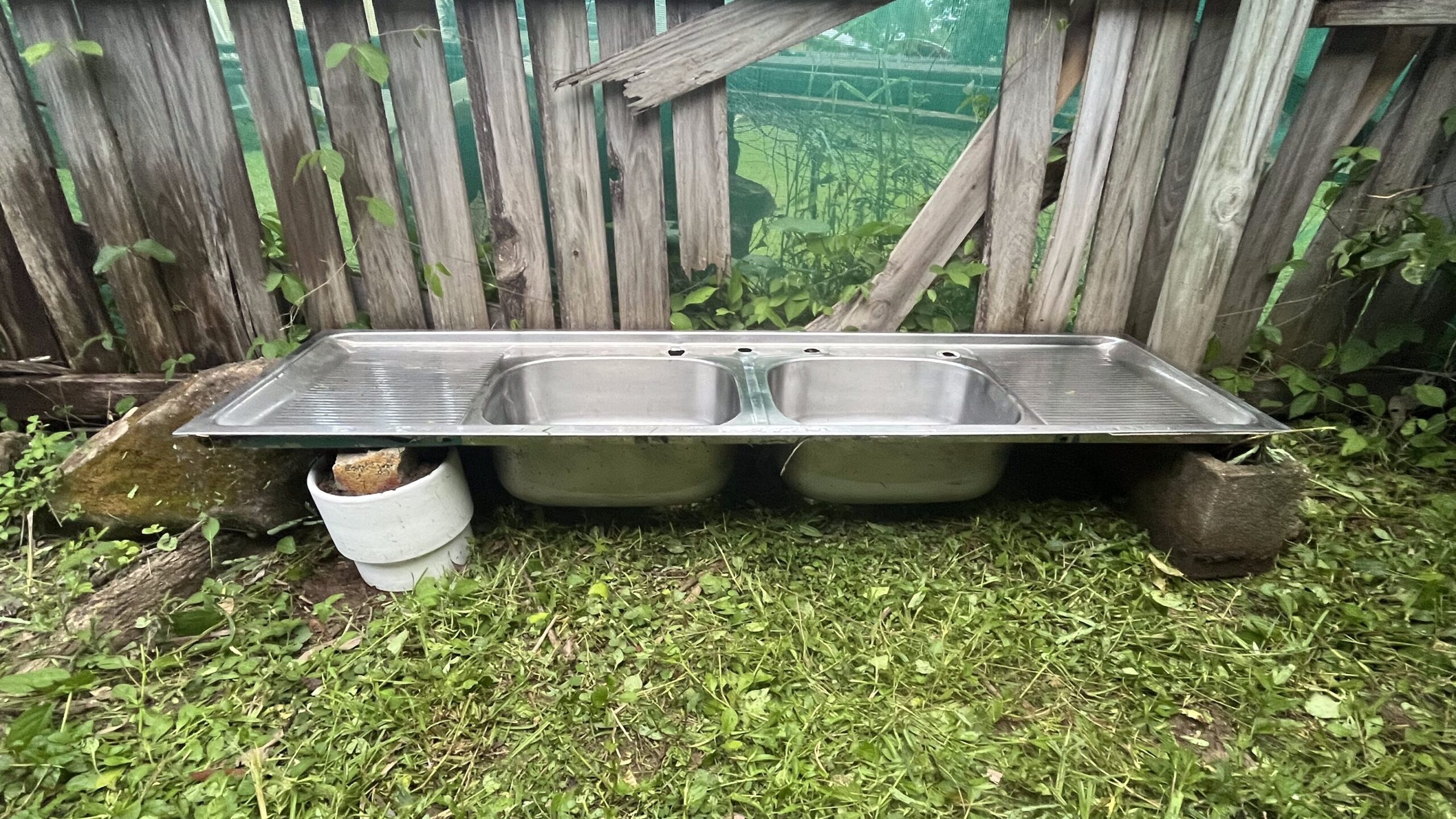
Add a drainage layer. Make sure your sink or bath has enough drainage holes. Use old bricks, rocks, gravel, or broken pots to create a base layer. These materials are usually easy enough to find around your backyard.
How do I keep the soil from washing out the drain hole? For an added layer of protection, cover the drainage hole with mesh, an old piece of shade cloth, or even a few large flat rocks to stop soil from washing out.
We used a combination of sticks, leaves, twigs to help with drainage. This layer also helps to stop weeds AND reduces the amount of soil you will need to use.

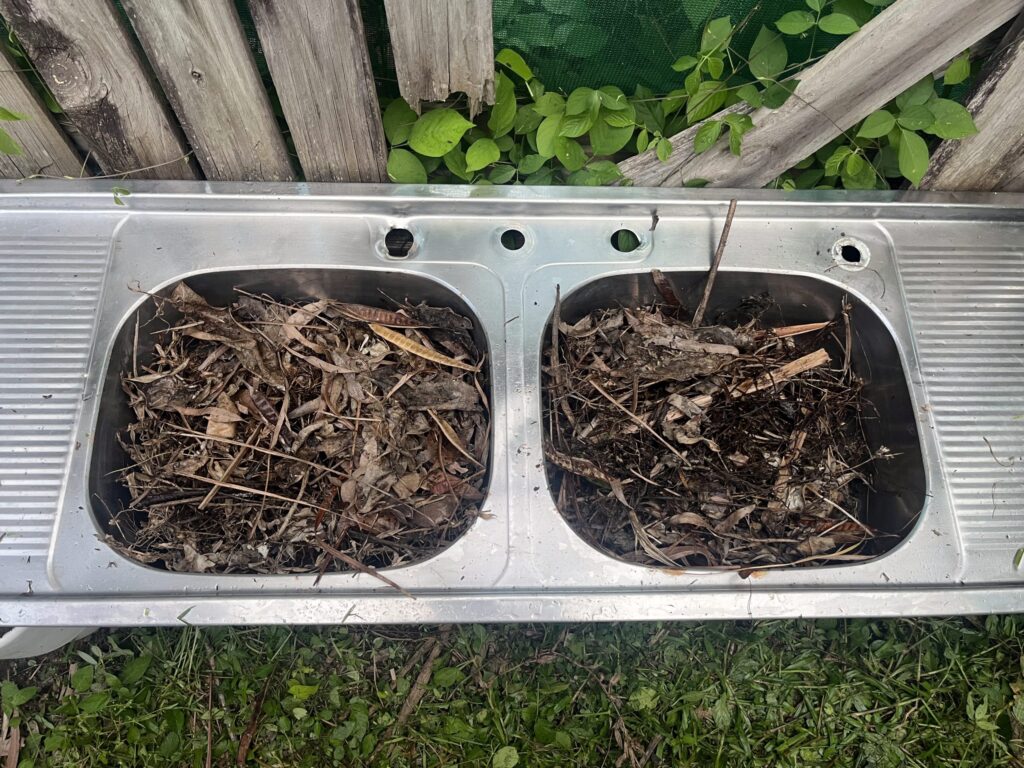
Fill with soil. You will need one bag of potting mix for a sink, and up to four or five for a full-sized bath. Buying multiple bags can add up, so look for free or cheap soil via local gardening groups, farms, or on Facebook Marketplace.
Pro tip! You can mix store-bought soil with homemade compost or worm castings if you have them.
We are lucky enough to live in Far North Queensland, where the soil is good quality, rich in organic matter and suitable for a variety of plants. So we mixed soil from the ground with left over potting mix to to complete our garden!

Step 3: Source Seeds or Seedlings
This is where the community spirit comes in. Ask around, most backyard growers have too many seedlings. A quick post like this usually works:
Hi everyone, I am starting a backyard garden by upcycling an old sink. Does anyone have some seedlings they would be willing to share?
Sweeten the deal by offering them some plants in return. You’ll likely get a bunch of replies and more seedlings than you can plant!
What should I plant? Great options for sinks include leafy greens and herbs. For baths you can go bigger with root veggies.
Best veggies for sinks
Lettuce, spinach, rocket, herbs (parsley, basil, chives), spring onions, radishes.
Best veggies for baths
Carrots, beets, silverbeet, cherry tomatoes, capsicum, zucchini (space dependant).
Technically we used a loophole for this section…we had a gift voucher for Bunnings so we acquired all our seedlings from there, so technically they were “free.”
We have since gained more seedlings than we know what to do with from family and friends. So if we had made the effort to ask around, we probably wouldn’t have had to buy from Bunnings.
We chose to plant spinach, coriander, lettuce, capsicum and dwarf beans.
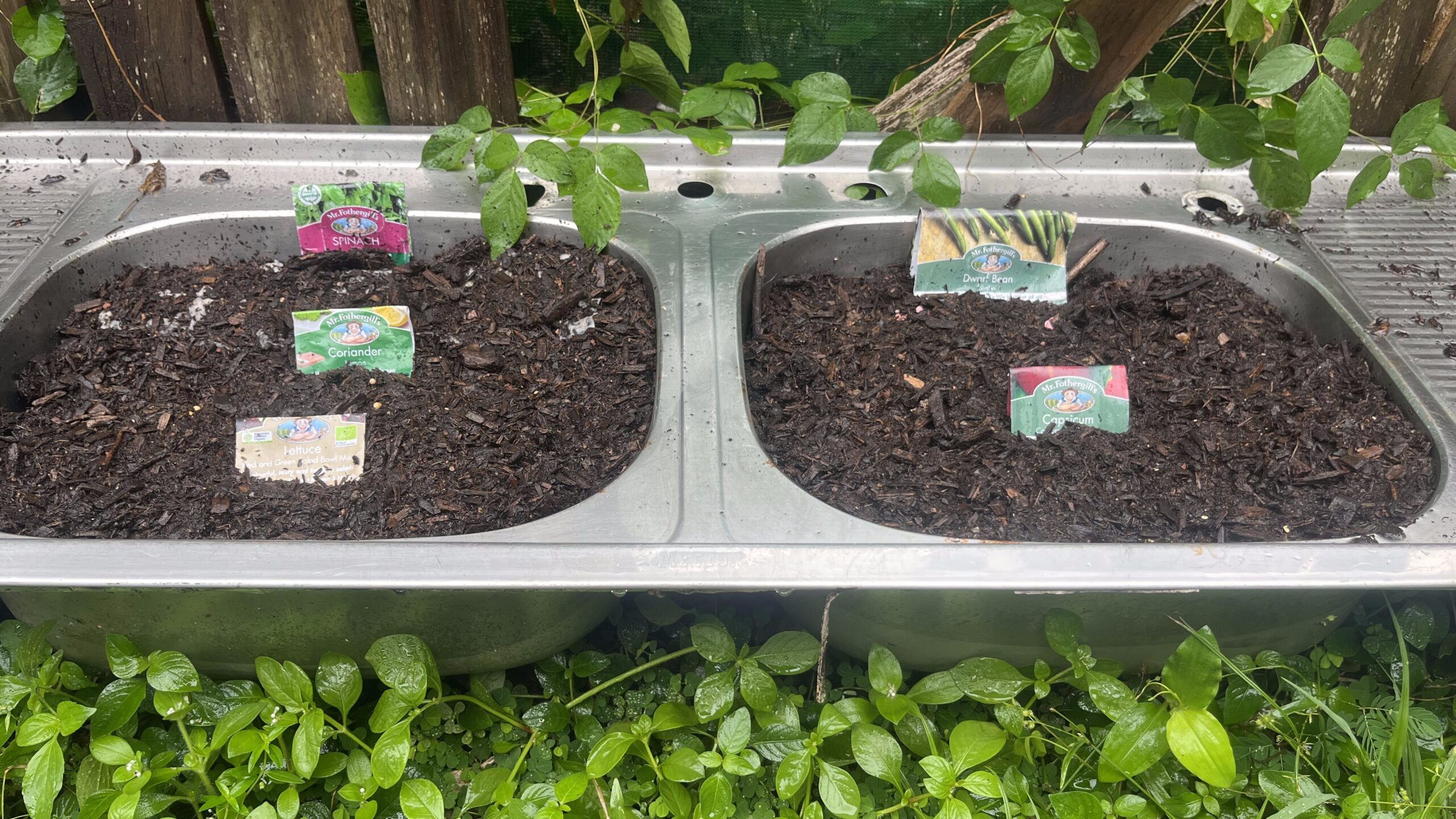
Step 4: Keep It Alive
This is the step I ALWAYS find the hardest. Here’s how to keep your new mini-garden flourishing.
Water regularly. Especially in warm weather.
Feed with homemade compost or worm wee. This can be done very couple of weeks. If you don’t have any, ask around, someone probably has extra.
Watch for pests. Pull them off by hand or use natural sprays like garlic and chilli.
How to Compost at Home in Australia: Step-by-Step
What I love most about our sink garden is that maintenance is minimal and the rewards are delicious. I by no means have a ‘green thumb’ but I have found our sink garden to be an easy introduction to growing our own food.
I’m happy to report that the coriander, lettuce and capsicum are thriving! We had a few intense weather events after planting that knocked out the spinach and beans :(( So I will have to give them another go.
Final Cost Breakdown
| Item | Cost |
|---|---|
| Sink | $20 |
| Potting Mix | $0 |
| Seedlings | $0 |
| Sticks, leaves, bricks, etc. | $0 |
| TOTAL | $20-$30 |
If you’re upcycling a bath and can’t find free soil, you might have to adjust the $30 limit. But with a bit of luck, it’s still totally doable.
Why a DIY Raised Vegetable Garden is Worth It
Low waste! You’re saving an old fixture from landfill.
Low cost! You don’t need to buy new garden beds or expensive gear.
Community driven! You’re connecting with neighbours, friends and family.
Rewarding! Few things beat pulling dinner out of your own repurposed bathtub.



